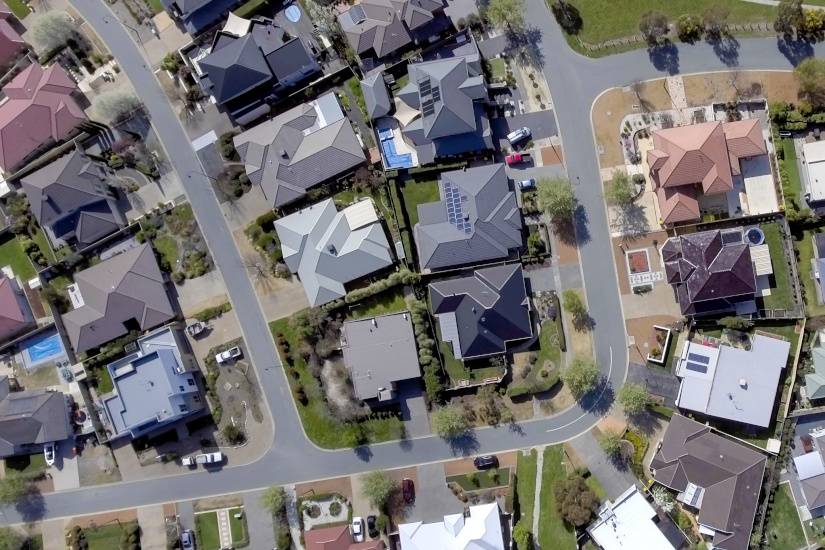Resources
House price decline and property investing
Promoted by Charter Hall Direct.
The phenomenon of falling house prices in Australia has moved from prediction to reality, albeit after a near doubling of prices in the four years to 2017.1
House price decline and property investing
Promoted by Charter Hall Direct.
The phenomenon of falling house prices in Australia has moved from prediction to reality, albeit after a near doubling of prices in the four years to 2017.1

The latest research from property consultants CoreLogic notes that as of 28 February 2019, nationally, Australian house prices have receded by 6.8% since a peak in October 2017.
“National dwelling values have returned to where they were in December 2016”, notes CoreLogic head of research Tim Lawless.
This negative data and what seems like daily negative press articles on the residential property lead to two questions I’m regularly encountering in discussion with self-directed investors:‘Should I avoid investing in property generally and is commercial property falling as well?’
My short answer is ‘no’ – to both questions.

The residential market is very different from the commercial property market.
There are excellent opportunities in the commercial property sector that have attractive income yields – around the 6% p.a. mark or higher, good capital growth prospects and entry points that are readily accessible in terms of both convenience and price. I am referring to unlisted and listed property funds of which there is a large investible universe or choice.
But first, let’s quickly look at the dichotomy that is residential v commercial.
Purchasing residential real estate usually revolves around two main themes.
The most obvious, of course, is to provide somewhere to live. This can be a highly emotional and subjective decision and not always a simple, economically rational one.
The second theme is for investment purposes. There is often a psychological aspect to this too because many people obtain comfort from investing in so-called ‘bricks and mortar’, despite the relatively low income or yields on offer.
On the subject of residential yields CoreLogic (Hedonic Home Values Index, February 2019 Results -released March 1, 2019) notes that despite relatively soft rental conditions national residential gross rental yields are slowly recovering, picking up from 3.8% in 2018 to reach 4.1% in February 2019. Despite the subtle rise, gross rental yields remain well below their decade average of 4.31%.
It’s important to note all these yield figures are ‘gross’ and do not take account of costs, such as rates, land taxes, insurance, repairs, and maintenance. Transactions costs are also high- think stamp duty, legal expenses, and agent fees. Truenet income yields are substantially lower than gross yields due to these imposts and often even negative, a fact investors sometimes overlook. This means that investing in residential real estate very often is a capital appreciation play, which is great in the rising market we have been experiencing until recently. It’s much more problematic in the current declining residential property market.
The economics of investing in high-quality commercial property via units in a direct property fund, such as the Charter Hall direct property funds I oversee or an ASX listed Australian Real Estate Invest Trust, aka A-REIT, is a very different issue.
The macro drivers of the investment-grade/blue-chip commercial property market in which these funds invest are economic growth and population growth, which generally are positively correlated. Also, unlike residential leases, commercial leases tend to be medium to long-term thus making returns reasonably predictable.
Another significant difference with commercial real estate, with particular interest to nest egg builders, is that it is accessible via well-established regimes for shared or unitized ownership structures, both listed and unlisted.
Thus a nest egg investor can access blue chip commercial property for an investment as little as $20,000, in the case of direct property funds such as the Charter Hall Direct Office Fund or Charter Hall Direct Industrial Fund No.4, or an A-REIT for as little as say $1,000 via their online broker.
These properties have quality tenants, the terms of the lease can be more than 8 years, and the manager- Charter Hall -is one of the biggest and best credentialed in the industry with more than $28billion of property funds under management.
So, at a time when house and unit prices are headed south, I believe that it’s time to look to first-class commercial property available in unitised form, rather than abandon property altogether.
The attractions of ~6%per annum yield available from the Charter Hall Direct funds currently open to investors, is a compelling proposition worthy of serious consideration.
Sources:
- Media reports of Urbis research released in November 2018
- CoreLogic Hedonic Home Value Index, February 2019 Results: https://www.corelogic.com.au/sites/default/files/2019-03/CoreLogic%20home%20value%20index%20Mar%201%20FINAL.pdf

Sponsored features
Dissecting the Complexities of Cash Indices Regulations: An In-Depth Analysis
Introduction In recent years, the world of finance has seen a surge of interest in cash indices trading as investors seek potential returns in various markets. This development has brought increased ...Read more

Sponsored features
The Best Ways to Find the Right Trading Platform
Promoted by Animus Webs Read more

Sponsored features
How the increase in SMSF members benefits business owners
Promoted by ThinkTank Read more

Sponsored features
Thinktank’s evolution in residential lending and inaugural RMBS transaction
Promoted by Thinktank When Thinktank, a specialist commercial and residential property lender, recently closed its first residential mortgage-backed securitisation (RMBS) issue for $500 million, it ...Read more

Sponsored features
Investors tap into cyber space to grow their wealth
Promoted by Citi Group Combined, our daily spending adds up to opportunities for investors on a global scale. Read more

Sponsored features
Ecommerce boom as world adjusts to pandemic driven trends
Promoted by Citi Group COVID-19 has accelerated the use of technologies that help keep us connected, creating a virtual supply chain and expanded digital universe for investors. Read more

Sponsored features
Industrial property – the silver lining in the retail cloud
Promoted by ThinkTank Read more

Sponsored features
Why the non-bank sector appeals to SMSFs
Promoted by Think Tank Read more

Sponsored features
Dissecting the Complexities of Cash Indices Regulations: An In-Depth Analysis
Introduction In recent years, the world of finance has seen a surge of interest in cash indices trading as investors seek potential returns in various markets. This development has brought increased ...Read more

Sponsored features
The Best Ways to Find the Right Trading Platform
Promoted by Animus Webs Read more

Sponsored features
How the increase in SMSF members benefits business owners
Promoted by ThinkTank Read more

Sponsored features
Thinktank’s evolution in residential lending and inaugural RMBS transaction
Promoted by Thinktank When Thinktank, a specialist commercial and residential property lender, recently closed its first residential mortgage-backed securitisation (RMBS) issue for $500 million, it ...Read more

Sponsored features
Investors tap into cyber space to grow their wealth
Promoted by Citi Group Combined, our daily spending adds up to opportunities for investors on a global scale. Read more

Sponsored features
Ecommerce boom as world adjusts to pandemic driven trends
Promoted by Citi Group COVID-19 has accelerated the use of technologies that help keep us connected, creating a virtual supply chain and expanded digital universe for investors. Read more

Sponsored features
Industrial property – the silver lining in the retail cloud
Promoted by ThinkTank Read more

Sponsored features
Why the non-bank sector appeals to SMSFs
Promoted by Think Tank Read more









